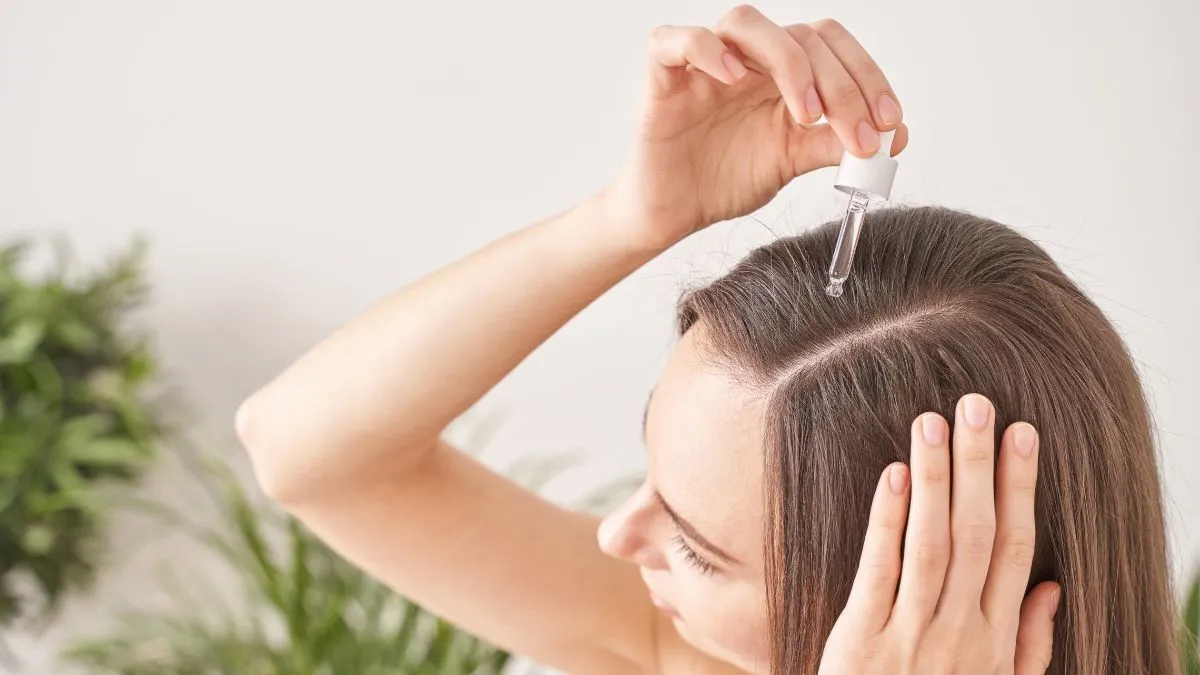- By Bornika Das
- Sat, 07 Jun 2025 12:29 PM (IST)
- Source:JND
Right Ways To Hair Oiling: Hair oiling has been a part of the Indian beauty rituals for centuries, which has been passed down from generation to generation in the quest for strong, shiny, healthy and longer hair. Little do people know that simply pouring the oil onto the scalp is not enough. Although most people apply oil regularly, few realise the method of application is just as important as the oil itself. Applying the oil in the right way can make all the difference when it comes to promoting hair growth and reducing breakage. To truly unlock the benefits of hair oiling, there’s a method to the magic. Whether you’re using coconut, mustard, amla, rosemary or almond oil, how you apply them is what matters the most. Moreover, the wrong application of hair oil can sometimes do more harm than good, clogging pores or leading to scalp buildup.
The correct techniques to apply hair oil ensure that the strands absorb more nutrients effectively and the scalp gets the stimulation it needs to support healthy follicles. Each and every step in the hair oiling process plays an important role in improving circulation and boosting hair strength from root to tip. Here are the right ways to apply oil for stronger, longer hair.
Step-By-Step Hair Oiling Guide
Right Oil As Per Hair Type
Not all hair oils are created equal for all and choosing the right one makes all the difference when it comes to hair growth. The choice of oil should be based on the texture of the hair, scalp condition and specific needs. For instance, coconut oil is ideal for dry, damaged hair and works well for deep conditioning. Castor oil is rich in ricinoleic acid and is known for promoting faster hair growth and thickening thinning strands. Almond oil is packed with Vitamin E and is ideal for taming frizz and adding a natural shine. On the other hand, rosemary oil, when diluted with a carrier oil, stimulates hair follicles and encourages new growth. Make sure the oil is pure and free from harmful additives like mineral oil or parabens.
Warm The Oil And Section The Hair
Warming the oil slightly before the application helps open up the cuticles and enhance absorption. Heat two to three tablespoons of oils until lukewarm and be careful not to burn the scalp. Use the fingers or a dropper and start applying the oil to the scalp in sections. Part the hair into small sections to make sure every part of the scalp receives equal attention. Sectioning the hair makes the process more organised and ensures that the scalp is well covered, which is crucial for stimulating the hair roots and improving overall hair health.
ALSO READ: DIY Homemade Onion Hair Oil To Banish Hair Fall Naturally In 7 Days
Massage The Oil Onto The Scalp
This is one of the most crucial steps in the hair oiling process. A proper scalp massage can boost blood circulation to the hair follicles, which enhances the nutrient delivery and promotes hair growth. Use fingertips and not the nails and massage in gentle, circular motions for at least 10-15 minutes. Pay attention to areas like the crown and temples, where hair loss may be more prominent. Massaging also helps relax the muscles and can reduce stress. For an extra boost, consider flipping the head upside down while massaging. This method is known for the inversion technique, which helps increase blood flow to the scalp and speed up the growth.

Correct Techniques For Hair Oiling For Stronger Hair (Image Credits: Canva)
Don’t Skip Lengths And Ends
While focusing on the scalp while oiling the hair is natural, it is important not to forget to apply the oil to the lengths and ends of the hair. These areas are more prone to dryness, breakage and split ends. Gently distribute the oil down the shaft of the hair with the help of the palms or a wide-toothed comb to avoid tangling. Focus particularly on the ends as the oldest and most damaged parts. After oiling, tie the hair in a loose braid or bun and wrap it in a warm towel or cover with a shower cap. This traps heat and allows the oil to penetrate deeper. Let it sit for at least 1 hour and for best results, overnight. Avoid leaving oil on the scalp for more than 24 hours as it can attract dust and clog pores, leading to scalp issues.
ALSO READ: How To Choose Best Hair Oil For Your Hair Type? 5 Smart Ways That Actually Work
Rinse Gently And Stay Consistent
Washing off oil can be tricky, but using a harsh shampoo defeats this purpose. Use a mild, sulphate-free shampoo and lukewarm water to rinse thoroughly. You may need to lather twice if you applied a thick oil like castor oil. Avoid hot water as it can strip your hair of natural oils. Over-oiling or oiling too frequently can weigh hair down and cause product buildup, while too little oil may not offer noticeable benefits. For most hair types, oiling once or twice a week is ideal. Follow up with a gentle conditioner or leave-in serum to seal in moisture

